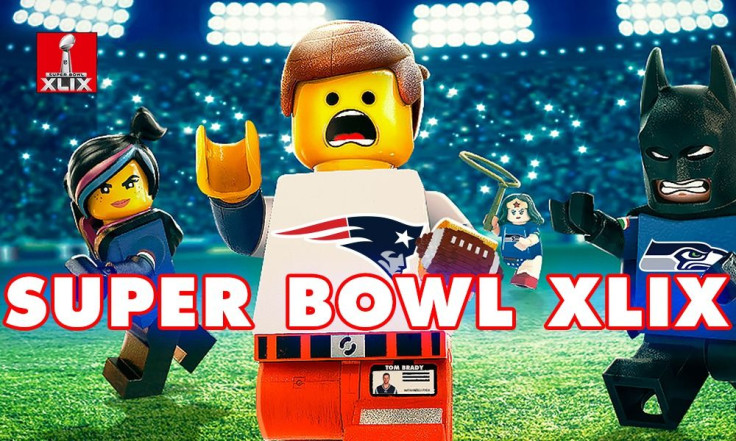Super Bowl 2015: Why NBC Needs The Second Screen For A Ratings Win On Sunday

If NBC wants to take home a ratings win on Super Bowl Sunday, it’s going to have to dominate on two screens. Even with Katy Perry scheduled for halftime and two weeks’ worth of promotion around the big game’s stars and its commercials, a key factor in determining the success or failure of NBC’s telecast will be sitting in Americans’ laps, in the form of their smartphones, tablets and laptops.
It’s 2015, and consulting a second screen while watching television has become standard practice. Last year, more than two-thirds of U.S. Internet users checked out a social media platform during live prime-time television, according to research conducted by Millward Brown. More than 70 percent check their email, and Nielsen research shows that Twitter activity has the ability to drive more viewers to tune in.
“It's essential to include the digital ecosystem in the cultural phenomenon that is the Super Bowl,” said Joel Espelien, an analyst specializing in second screen strategy at the Diffusion Group. “It's not about the game.”
“It all drives rating and tune-in,” he added.
More resources
Since it last broadcast the Super Bowl in 2012, NBC has significantly increased the resources it devotes to social media.
“We have a much bigger team now,” said Rick Cordella, the vice president of digital media for NBC’s sports and media group.
Three years ago, NBC had just a few people posting content to three social media channels during Super Bowl XLVI. This year, five supervisors are coordinating more than 30 people spread out across locations in two time zones, all producing and monitoring content being published across Facebook, Twitter, Instagram, Vine and Pinterest. Every member of NBC Sports’ newsroom has access to its social media accounts.
“I think back then it was more of a specialization,” Cordella said. “Now it's part of a job requirement.”
NBC is also leveraging a vast network of celebrity partners to keep people engaged. Lyndsay Signor, the director of social media marketing at NBC Sports, spearheaded a move to rope in celebrities from across NBCUniversal’s brands, as well as a number of stars known outside the NBCU umbrella.
“We're trying to surround the fans in the run-up to the game,” Cordella said.
More competition
NBC must cast a wide net because its competitors are using social to do the same thing. Despite its status as the most-watched telecast of the year, the Super Bowl is never the only game in town; brands and rival broadcasters have been programming against the Super Bowl for years. In 1992, Fox pulled more than 10 million viewers away from CBS’s Super Bowl telecast with a special broadcast of “In Living Color,” and events like the Lingerie Bowl, which debuted on pay-per-view in 2004, and the Puppy Bowl, which bowed the year after that, have evolved into staples for small pockets of the big game’s sprawling viewership. In 2013, Discovery said that its Puppy Bowl generated 10 separate trending topics on Twitter and pulled in more than 12.4 million viewers.
This year, NBC has even more competition. YouTube, which spent the past few years elbowing its way into more and more mainstream television broadcast events -- most recently during this month’s State of the Union address -- will host its own fake halftime show (starring YouTube celebrities like Freddie Wong). Comedy Central is hosting its own alternative to the Super Bowl as well.
All of these forces will be looking to pick off pockets of viewers, and they have strong followings to leverage. Harley Morenstein, the host of Epic Meal Time, is active on Vine, Twitter and Instagram, and he has at least 400,000 followers on each platform. “It will be fun afterwards to see what was Freddie Wong’s draw compared to Katy Perry and Lenny Kravitz," Morenstein told Business Insider.
An introduction to streaming
There is an entirely separate second-screen experience NBC has to worry about as well: Its own live stream of the game. In 2012, it became the first network to offer a stream of the Super Bowl online. More than 2.1 million people tuned in using computers and laptops, and while the network hailed its maiden voyage as a success, not everyone agreed.
“If poor quality video with bad re-buffering is something that ‘exceeded their expectations,’ I'd hate to see how low they set the bar internally,” Dan Rayburn, an analyst at Frost & Sullivan, wrote in Streaming Media.
Cordella said NBC has made substantial improvements to infrastructure and planning that goes into streaming live sports, pointing to the network’s digital performance during the 2014 Winter Olympics at Sochi.
“Quite frankly I think we're much better at,” Cordella said, who pointed out NBC now streams more than 4,000 events a year using its TV Everywhere service.
But better will be necessary. You don't get a second chance to make a first impression.
"These big events really are the most important way that mainstream America gets introduced to sports on broadband," Espelien said.
Espelien points out that consumers who have positive experiences with streaming live sports programming the first time tend to try it again, but adds that those who don't tend to become squeaky wheels.
"If they have a bad experience, they're gonna go around for the next 12 months whining about it," he said.
On some level, what happens Sunday is out of NBC's hands. An ugly, one-sided game would derail even the best laid plans. And so even as his team continues to prepare, Cordeall acknowledges that there will be only so much NBC can do.
“I don't think there's a way we could own the conversation,” Cordella said. “I think it'd be a bit naive to say we could pull that off.”
© Copyright IBTimes 2024. All rights reserved.





















